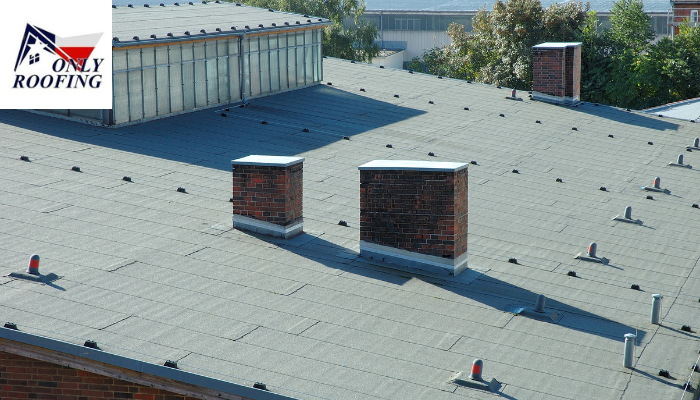TPO (Thermoplastic Olefin) roofing is renowned for its durability and energy efficiency, making it a popular choice for commercial and residential buildings. However, over time, TPO roofs may require sealing to maintain their protective qualities and prevent leaks. Frequently asked question: what can you use to seal a TPO roof? Choosing the right sealant for your TPO roof is crucial to ensure its longevity and performance.
Effectively seal a TPO roof
Following options can use to effectively seal a TPO roof
1. Silicone Sealants
Because silicone sealants are so durable and UV-resistant, they are the best option for sealing TPO roofs. These are some of the main attributes and advantages of silicone sealants:
- UV Resistance: Silicone sealants are so resistant to UV rays, they are a great option for TPO roofs that are exposed to the sun.
- Flexibility: Even in extremely hot or cold weather, they maintain their flexibility to allow for the normal expansion and contraction of TPO roofing material.
- Durability: The lengthy lifespan of silicone sealants lowers the need for frequent resealing.
- Ease of Application: Because of their ease of application, they can be used by both roofing professionals and do-it-yourself enthusiasts.
2. Acrylic Sealants
What can you use to seal a TPO roof? Acrylic sealants are another option for sealing TPO roofs. While not as UV-resistant as silicone sealants, they offer several advantages:
- Affordability: Acrylic sealants are budget-friendly, making them a cost-effective choice for sealing TPO roofs.
- Ease of Application: They are easy to use and appropriate for anyone seeking a simple sealing procedure.
- Weather Resistance: Acrylic sealants offer sufficient defense against environmental factors, especially in areas with milder climates.
- Energy Efficiency: By reflecting sunlight, they can improve a TPO roof’s energy efficiency.
3. Butyl Sealants
Butyl sealants are known for their exceptional adhesion properties and resistance to water penetration. Here’s why they are considered for sealing TPO roofs:
- Robust adhesion: TPO roofing materials and butyl sealants combine to provide a robust connection that guarantees a tight seal.
- Water Tightness: They are very good at stopping water intrusion, which is a crucial part of maintaining TPO roofs.
- Adaptability: TPO roof sealing is one of the many roofing applications for butyl sealants.
- Compatibility: The likelihood of compatibility problems is decreased because they are compatible with TPO roofing materials.
How to Seal Your TPO Roof?
Following the selection of the correct sealant, use the following procedures to establish a good seal:
Surface Preparation and Cleaning
Thoroughly clean the TPO roof to remove dirt, debris, and old sealant. Before continuing, make sure the surface is dry.
The Application Procedure
Follow the manufacturer’s recommendations before applying the sealant. For a uniform and successful application, use the suggested equipment and procedures.
Drying and Curing Times
Allow the sealant to cure and dry according to the manufacturer’s instructions. This step is critical for the sealant to properly adhere with the TPO roofing material.
Inspection and quality control
Inspect your TPO roof after sealing for any missed places or defects. Address any faults as soon as possible to achieve a watertight seal.
Factors to Consider When Choosing a Sealant
Choosing the best sealant for your TPO roof entails taking numerous aspects into account first of all, you must keep in mind the following factors before thinking what can you use to seal a TPO roof?
Weather and Climate Conditions
Consider your local climate. If you reside in an area with heavy UV exposure or harsh temperatures, choose sealants that are particularly engineered to resist these circumstances.
TPO Roofing Compatibility
Check to see whether the sealant you choose is suitable with TPO roofing materials. To prevent any negative reactions, follow the manufacturer’s instructions.
specialist application procedures
Some sealants need the use of specialist application procedures or equipment. Determine if you can manage the application on your own or whether professional help is required.
Considerations for Longevity and Cost
Compare the projected lifetime of the sealant with the expense. Investing in a more expensive, longer-lasting sealant might sometimes save you money in the long term by minimizing the frequency of resealing.
Conclusion
Inspect your sealed TPO roof on a regular basis and treat any damage as soon as possible. Proper maintenance and resealing on a regular basis can prolong the life of your TPO roof and keep it working optimally. By using the proper sealant and application processes, you can guarantee that your TPO roof stays a dependable and long-lasting roofing option. If necessary, seek expert help, since a well-maintained TPO roof may offer your home with years of protection and energy savings.
Read More:

